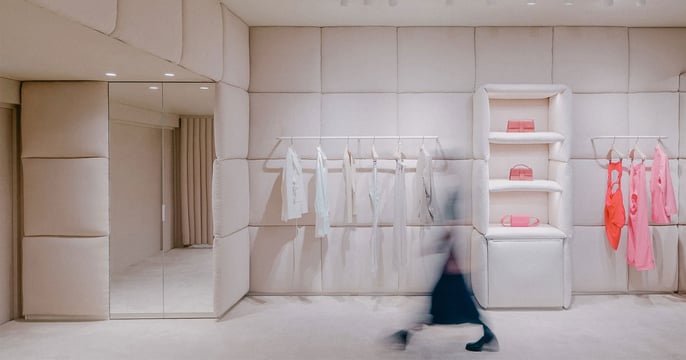Bespoke Visual Merchandising – why ‘roll outs’ are no longer the norm
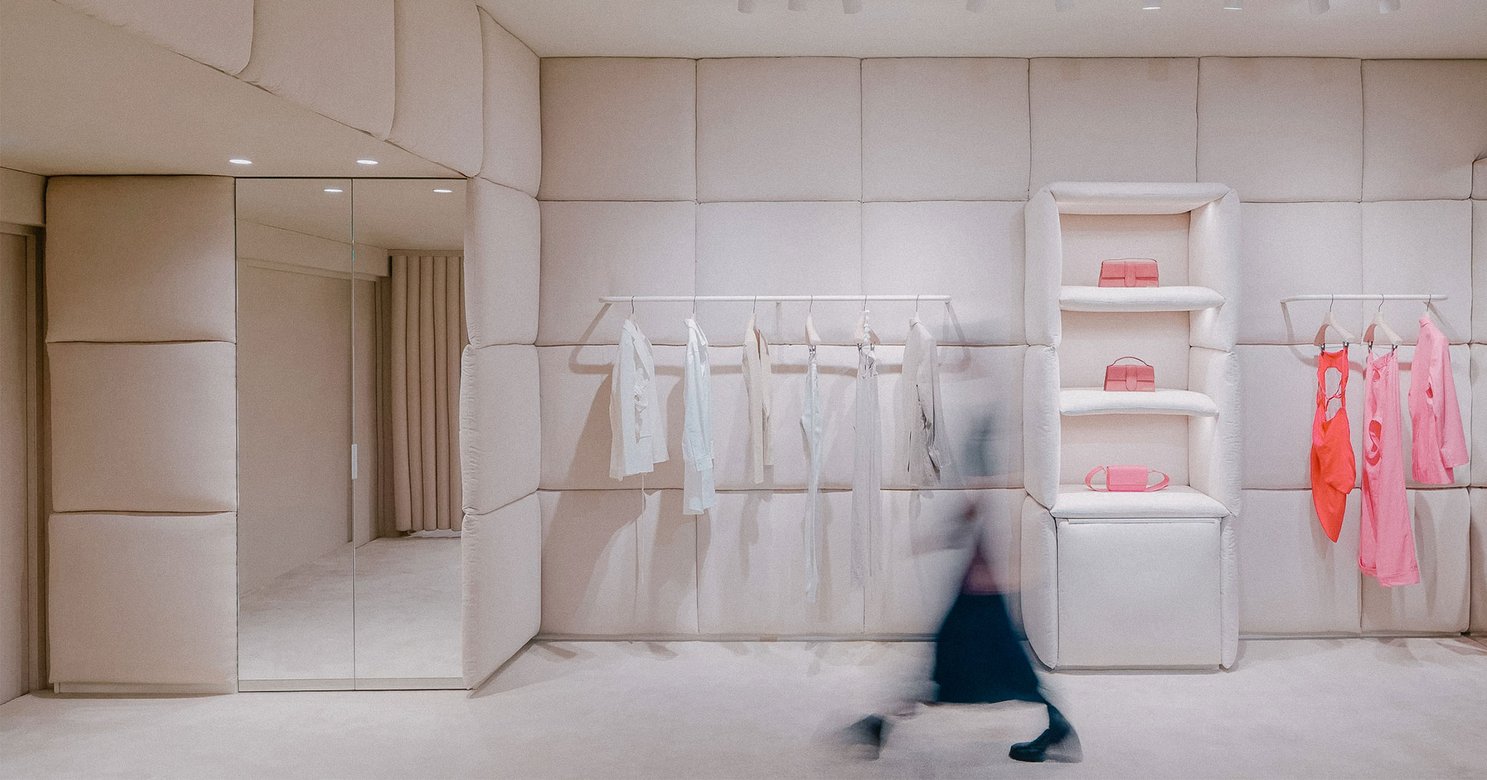
Bespoke Visual Merchandising – why ‘roll outs’ are no longer the norm
Not long ago, in the world of visual merchandising, consistency was king. Creative teams brainstormed ideas, developed a seasonal scheme and launched a guideline for roll out across the business. Regional teams knew what was expected and how to achieve it. And their customers saw the same presentation whether in Brighton or Barcelona. That clarity of message was vital…or so we thought.Whilst that process still makes great business sense for some large multiples, customer expectation has evolved. Now emphasis is placed on central brand values and identities, with the outward aesthetics able to dance around that core DNA. Experimentation with conventional setups ensures shoppers stay engaged; that extra layer of creativity is necessary to really stand out in a crowded retail sector.
Changing spaces
Smaller chains especially, are seeing the benefits of ripping up standardised formats and thinking
bespoke. Amsterdam based opticians Ace + Tate champion bold design that rips up the rule book of ‘white box opticians’ and, remarkably, every one of their spaces is unique. Working with different artists every time, the spaces each have their own distinct story that makes them much more than just a place to buy eyewear. Local references and global trends are all captured - Charles Rennie Mackintosh influences their Glasgow 📷👇 store whilst the Antwerp 📷👇 shopfit is a masterclass in sustainability.
Adapting merchandising for every new space allows a brand to experiment, identify what works for them and learn how their customers interact with it. As an intentional strategy, constant redesign keeps things interesting for both customers and creative teams. Pop-ups too give brands the perfect opportunity to play with new ideas. The ever-changing elements of event, customer base, architecture and product range dictate how each project looks, rather than a generic visual approach.
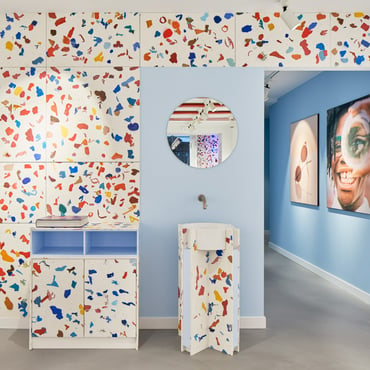
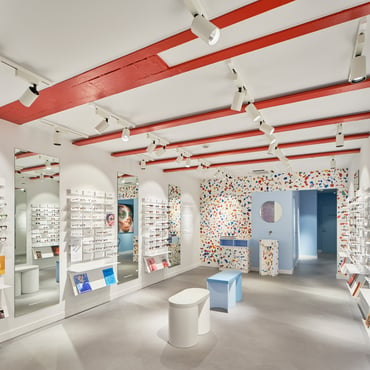
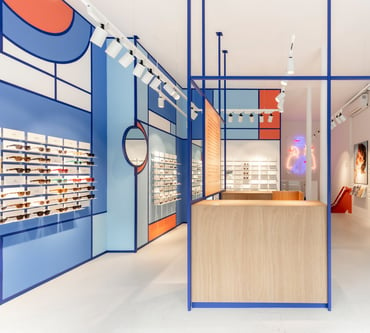
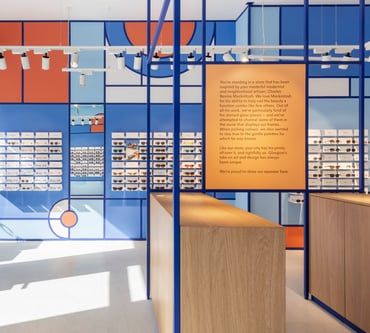
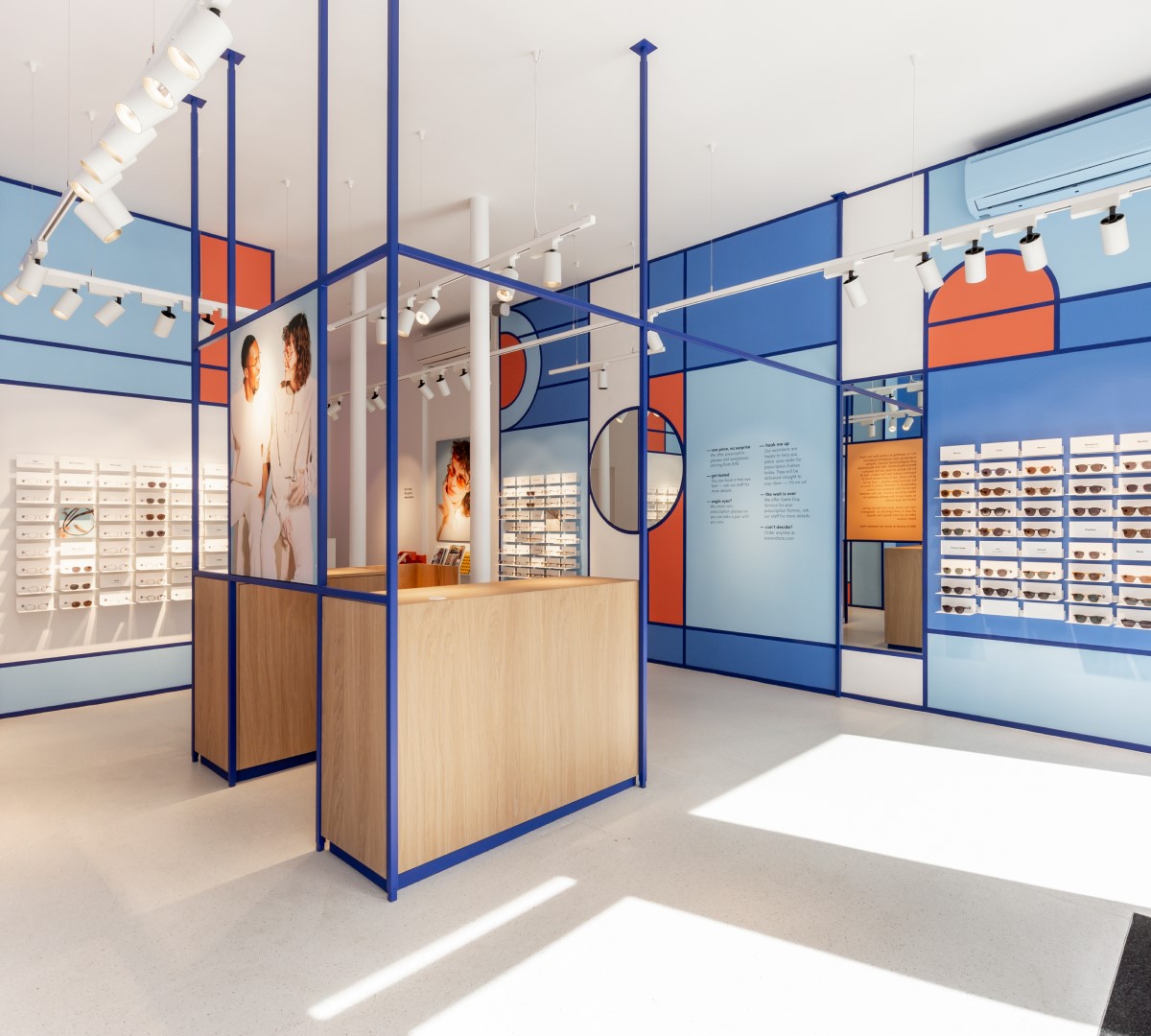
Collabs
There is rarely a new collection launched these days without an ‘x’ in the title. Birkenstock x Manolo Blahnik, Disney x Givenchy, even Balmain x Barbie. Category-defying partnerships that we could never have imagined have seen some jaw dropping results, as the desire for surprise and novelty drives consumer appetite.
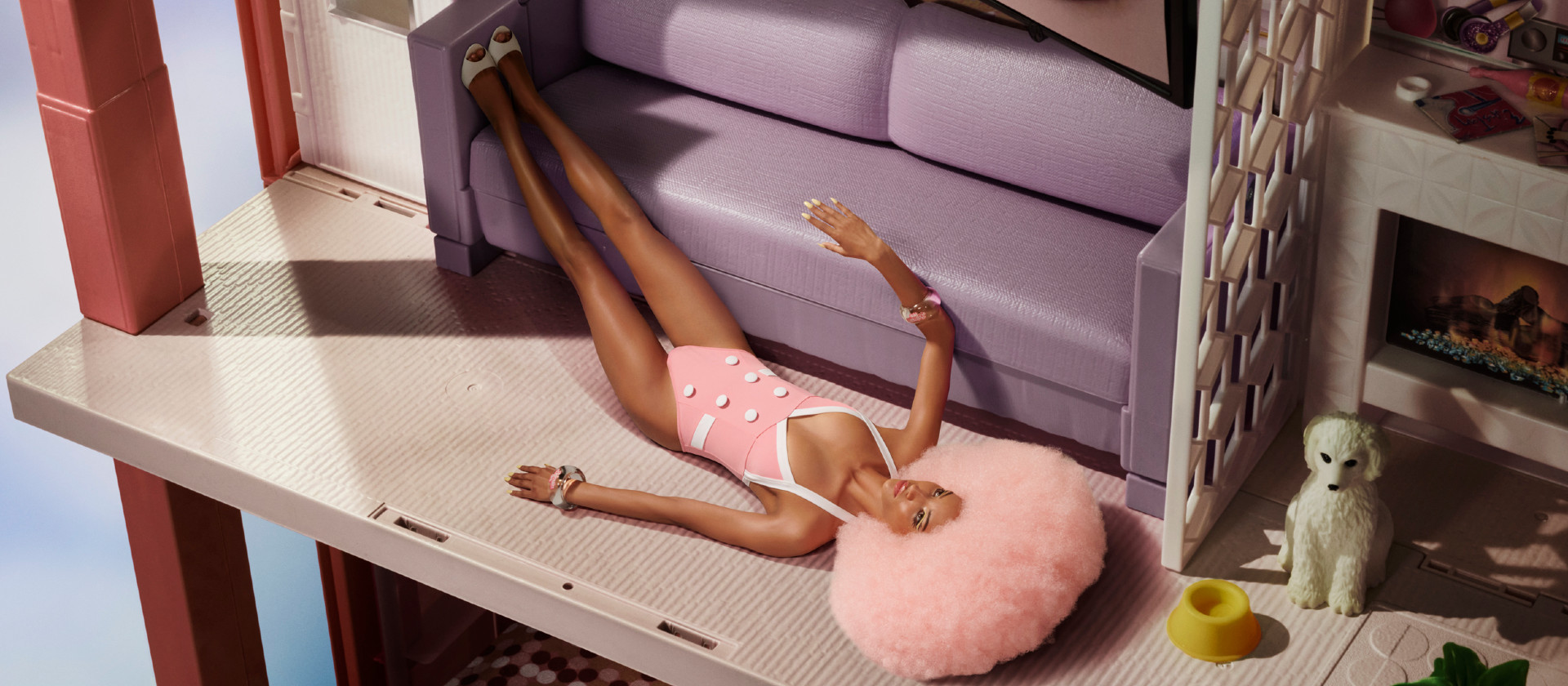
Collaboration is a trend that has re-shaped the retail landscape. Combining luxury labels with
quirkier brands seems challenging but they often appeal to the same clientele. But whilst that
juxtaposition might look great styled in a glossy mag, making it work successfully within a retail store is trickier. Merging established aesthetics whilst staying true to each brands identity requires clever VM interpretation. The Gucci x adidas pop-up has managed this by incorporating the adidas logo with characteristic Gucci colour palettes and prints. “With the heritage of both brands encoded in a trio of lines, a fixation on stripes plays out across ready-to-wear and accessories…” The result is a striking departure for both labels but one that adds new layers to each, rather than diminishing either.
External partnerships
Creative agencies have also found success in this movement towards ‘bespoke’. Using external partners to re-imagine campaigns brings fresh eyes and a perspective that hasn’t been ground down by sign offs and directives. And with resources stretched in many retail businesses, using creative agencies ike Harlequin Design for example, to manage off-shoot projects makes sense practically as well as creatively. Different perspectives mean recognised aesthetics can take off in new directions. Plus, years of expertise in specialised prop-making means that the designs that live in your head can be made real in ways you hadn’t considered. Advances in technology mean cardboard engineering, CNC manufacturing and 3D printing are all now relatively accessible and their possibilities never-ending. VM staples such as mannequins can now be 3D printed to specific measurements, colours and designs, vital now that diversity is championed by so many. Sustainability initiatives too are forcing brands to find different ways to do things without mass production. Creating less waste is huge challenge for our industry and one that often needs small scale thinking at local level such as re-purposing and upcycling props in different ways.
Whilst this approach seems like a lot of extra work, the outcomes are invariably worth it. Tailoring visual merchandising to a target customer or product launch will ensure much more genuine engagement and constant re-invention is a great PR tool! Originality is key in 2022 with brands wanting custom-made elements to wholly align with their unique concepts. Innovation and collaboration are conditions in which creativity thrives and boundaries are broken. Visual merchandising has always been a way to mould expectations but now it questions them too. The challenge of forsaking the ‘roll out’ in favour of ‘bespoke’ is a great gauntlet to throw down at the feet of VMs and will ensure some spectacular results.
Header Photos: Jacquemus Shop-in-Shop by OMA
Never miss out on latest news in the retail industry on Facebook, Youtube, LinkedIn or Instagram.

